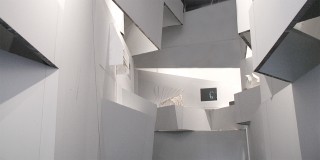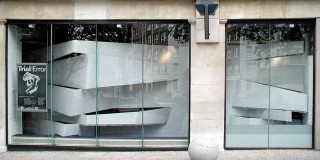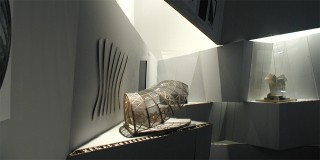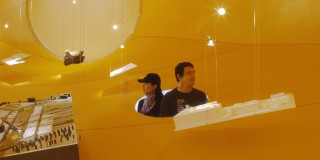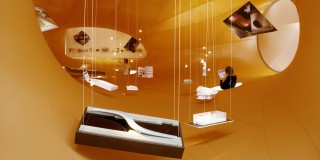This was a project I was thinking a lot about early on in the class. Magma architects (known now for designing the shooting pavilion at the London Olympics). Was asked to produce an exhibition space for architectural models. Essentially, they took the materiality of actual architectural sketch models, but increased the scale for inhabitation thereby, creating a space that actually felt like one was residing between the folds, creases, and irregular cuts of an architect’s sketch.
They write:
“Even in these days of computer virtual reality, many architects still find that the best way to visualise a design is to take scalpel, cardboard and glue and construct a working model. So when magma architecture was asked to design an exhibition to display working models for the Building Centre Trust, the Berlin-based practice came up with an ingenious and totally appropriate solution: the exhibits are housed in a walkthrough structure of cardboard, folded and glued together. It’s a magical enclosure – just like walking through a life-sized model; it is also cheap, easy to erect and dismantle and demonstrates how cardboard can be used as a structural material.”
Magma, of course, correlates this directly to the practice of Frank Gehry, whose full-scale tectonics frequently become a representation of the model from which they are created. Essentially, inhabitable models where glass and steel appear to act like cut and folded paper.
Magma also feature another exhibition on architectural models that takes on an entirely different approach. Here, a stretched fabric is use to create forced and limited vision points within the space.
What I find interesting is that the visitor gets to inhabit several different spatiality’s within the exhibit — both the positive and the negative space created by the tensile membrane.
Beyond the positive and negative is a twist towards the somewhat two-dimensional, where visitors in a more traditional gallery space are introduced to the exhibit as though it were another flat canvass on the wall.
